Mitsubishi Outlander PHEV review: Stylish model can get you 22 miles on an electric charge
A car with a niche appeal that could save you a lot of money
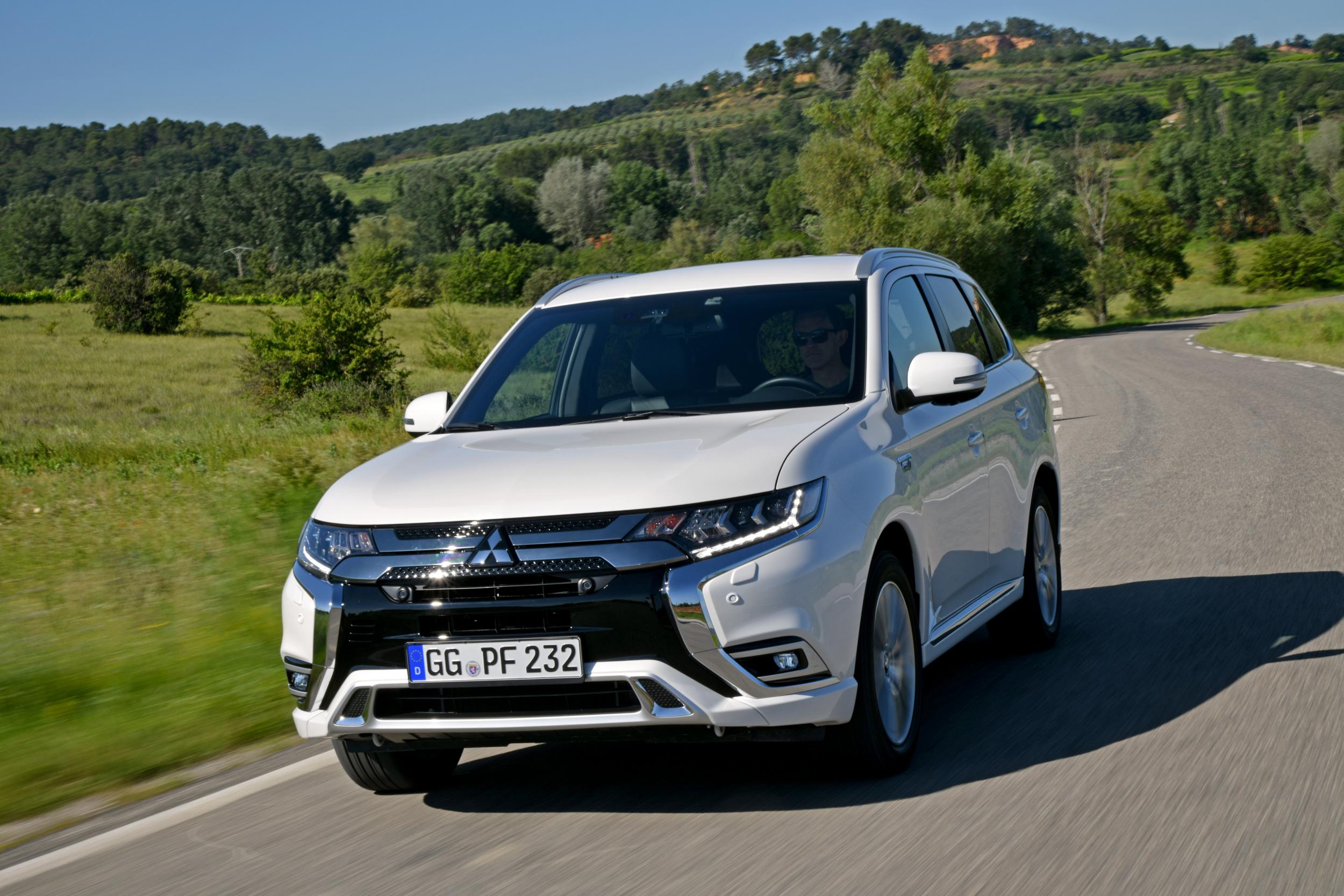
Your support helps us to tell the story
From reproductive rights to climate change to Big Tech, The Independent is on the ground when the story is developing. Whether it's investigating the financials of Elon Musk's pro-Trump PAC or producing our latest documentary, 'The A Word', which shines a light on the American women fighting for reproductive rights, we know how important it is to parse out the facts from the messaging.
At such a critical moment in US history, we need reporters on the ground. Your donation allows us to keep sending journalists to speak to both sides of the story.
The Independent is trusted by Americans across the entire political spectrum. And unlike many other quality news outlets, we choose not to lock Americans out of our reporting and analysis with paywalls. We believe quality journalism should be available to everyone, paid for by those who can afford it.
Your support makes all the difference.To help you understand the special appeal of the Mitsubishi Outland PHEV (Plug-in Hybrid Electric Vehicle), not revised for the 2019 model year, I’ll need to start with some facts.
First, some 38 per cent of commuting (to work) journeys are by car; second, the average daily commute is 10 miles each way (i.e. 20 miles for the round trip, just to be clear). The figures are for England, but are not so very different elsewhere in the UK.
Third – and this is where the Mitsubishi make sits dramatic entry – the new outlander PHEV will get you 22 miles just on its electric charge – so the petrol motor never has to kick in to help out. Fact. I know this last stat because I did it myself on the launch event, and I drive the Outlander PHEV gently but quite normally.
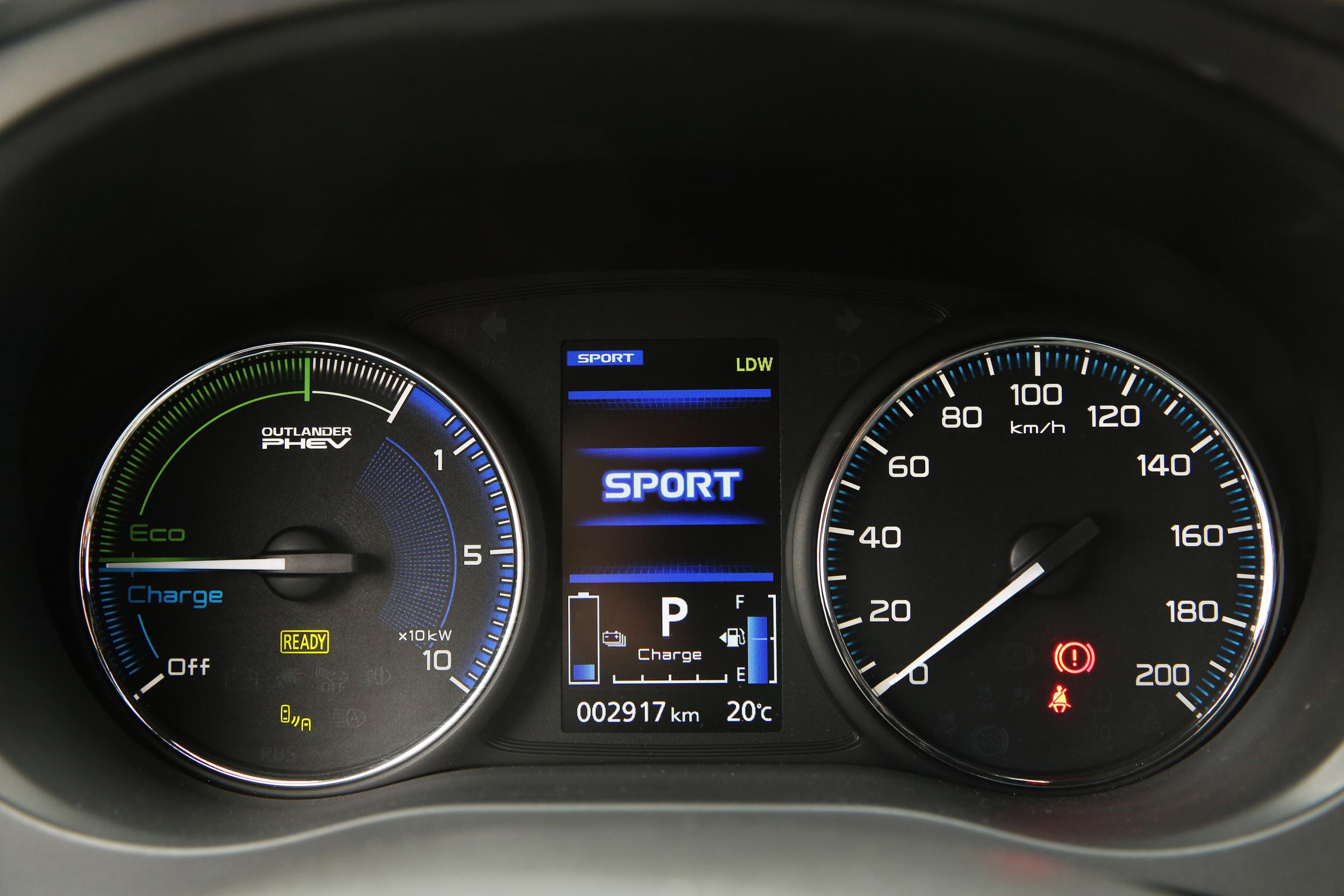
In its way, then, it is impressive, and the company proved its point. If, for the sake of argument, you can charge your Outlander at home, and then charge it again at work ready for the journey back home, then you can do all your commuting virtually for nothing – just a few hours charging on the national grid at your usual tariff, less any electric charge built up from the smart recycling of energy from the petrol engine that would be otherwise wasted (e.g. when braking). Obviously the car will set you back around £40,000, but day to day... it’s buckshee.
That, I think, accounts for much of the Outlander PHEV’s niche appeal – and quite a sizeable niche it is, given how many you see on the road, Mitsubishi being a relatively small player in the UK car market. Once you’ve laid out the hard cash to get your hands on it, or signed the e PCP lease agreement, the running costs are very low indeed.
Depending on how many miles you do, there are certainly some savings to be enjoyed, and some benefit to the planet – that is against a similarly sized diesel SUV say, rather than cycling or taking the bus, or walking.
Thus, under the new “real world” fuel consumption regime for official comparisons, the company claims you could be £750 a year better off if you drive say 9,500 miles a year, or, fairly obviously, £1,500 a year better off if you travel 18,000 miles a year (there’s a ready calculator for you at www.mitsubishi-cars.co.uk).
For company car drivers there are even bigger savings, “up to £12,000 over three years” say Mitsubishi, depending on what sort of hefty fuel guzzler you are putting it up against. Plus, there is a government grant to buy this SUV, and one to install a box on the side of your house for a higher powered charge point.
So the Outlander PHEV is a bit of a tax dodge, a fiscal freak, but Mitsubishi also say that about half of its buyers are private, so, presumably, either driven by conscience or some optimistic views on the potential fuel savings – for which the pattern of driving is quite specific. If, say, you do a 50 or 150 miles trip every day, or need to do long jaunts on motorways, the Outlander PHEV is a poor choice, even by comparison with diesel pioneered alternatives.
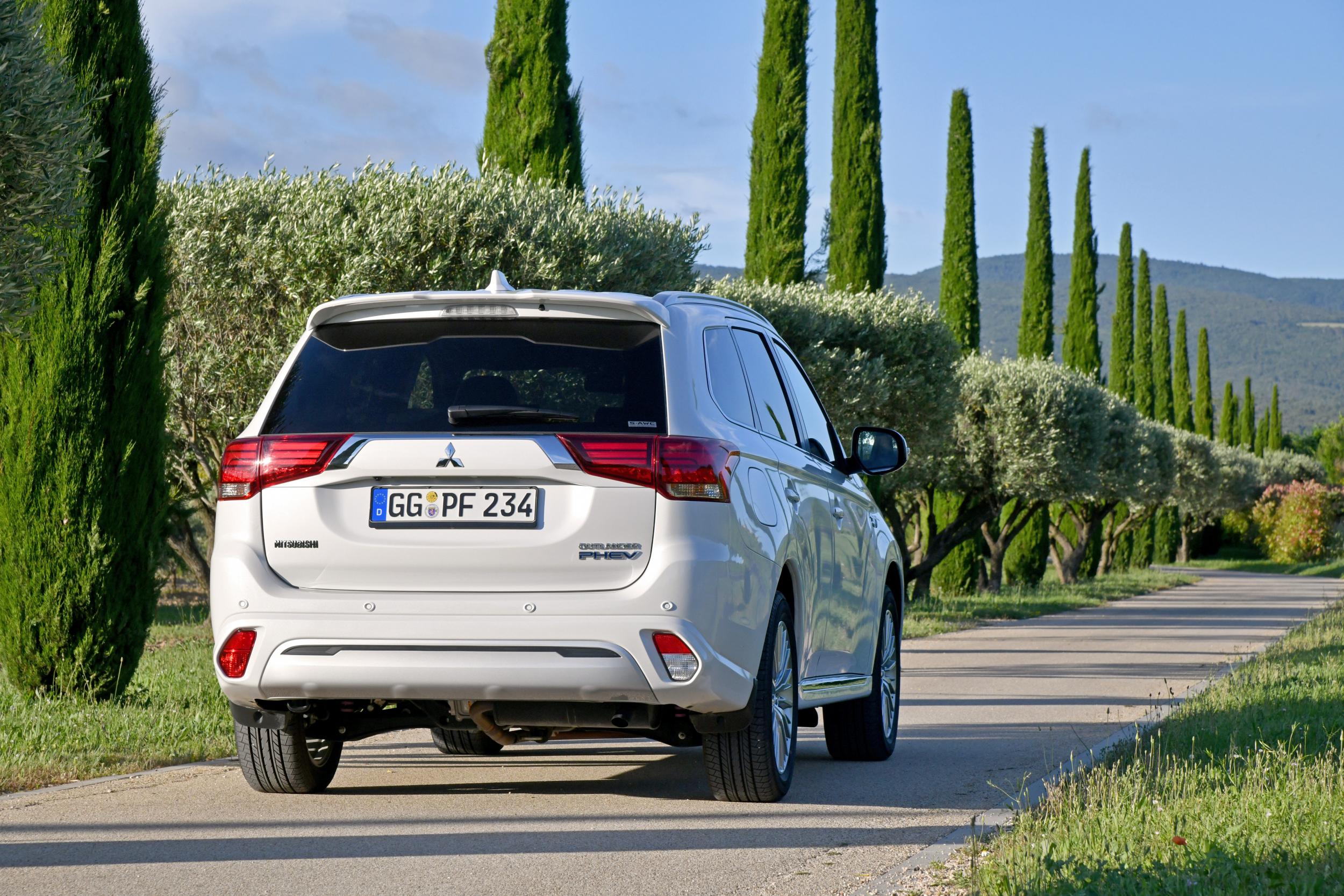
In any case, the Outlander is the UK’s best-selling plug-in hybrid – ahead of Toyota’s Prius or RAV4 equivalents, say, and it has found some 39,000 customers in Britain alone. Given that they don’t import the Mitsubishi Evo any more (CO2 emissions too high – shame), the PHEV is Mitsubishi’s signature car, and its continuing success vital.
It will most likely continue. The odd thing is that this new PHEV, quite heavily revised for the 2019 model year and out now, is not that much more economical/green than the old one. Some of this is down to installation of a new, larger capacity engine, and despite new, powerful batteries. This combination – plus side – gives you better acceleration, helps on steep country inclines and aids towing. But it doesn’t seem to improve the car’s already impressive, within certain parameters, economy and cleanliness.
The batteries boast 10 per cent more output, to 13.8kWh, capacity is up to 80kW, and the engine goes from 2 litres to 2.4 litres. The rear motor (there are two) is uprated from 82hp to 95hp. I just wish, wistfully, that there was a pure electric version. Maybe the next generation model, which can’t be far away.
The spec
Price: From £37,00
Engine capacity: 2.4-litre petrol; 4-cylinder + electric motor; auto
Power output (PS): 135@4,400 rpm
Top speed (mph): 106
0-60mph (seconds): 10.5
Fuel economy (mpg): 159.6
CO2 emissions (g/km): 40
Charging time: 5 hours (3 pin plug)
BIK: 13%
The engineers at Mitsubishi have, though, also been doing their best to make the internal combustion engine as green as they can. Overall, it will do a notional 135 mpg – which is good for a big old truck such as this – and it has a system of variable transmission cycles – the common “Otto” cycle and the more unusual “Atkinson” variant, which has the overall effect of making the engine behave like a much smaller one at low revs.
The car switches through the automatic gears (proper torque converter), and between ignition modes, electric/petrol power and around the rear and front electric motors seamlessly. A display on the dash shows you how green your driving is, and how the machinery is charging/discharging. There’s also a new “sport” button, and “snow” mode, which are self-explanatory, and permanent four wheel drive – good ground clearance and entry and exit angles make it perfectly suitable for mild off-road work. The styling is fairly chunky, with a “face” that looks to have been inspired by the Predator movies.
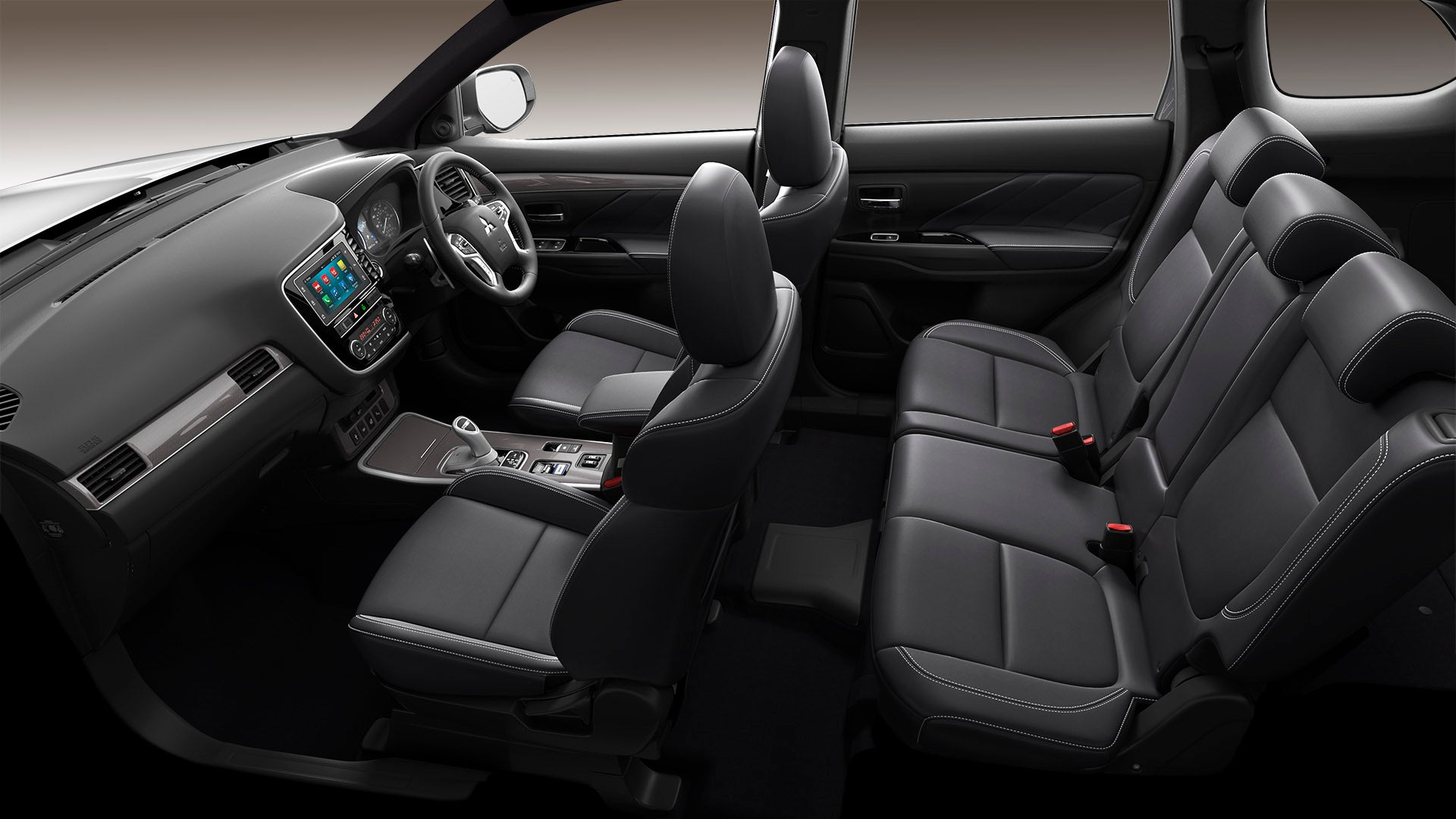
The Outlander’s interior is a bit smarter than before, but a couple of drawbacks remain. Most serious is the lack of a “proper” satnav system. This is really because it is brought in by a UK importing company, rather than some subsidiary of Mitsubishi itself, and it may be that the extra effort to build an integrated UK spec satnav isn’t worth the cost and effort for ether party. So you need to rely on a smartphone app instead, which feeds into the dash display. It works OK, but it isn’t as integrated as the competition. From about £10,000 more, for example, you can enjoy maximum plush modernity in the new generation Touareg I recently tested.
The interior is comfortable, even luxurious, but is a quite sombre affair. Apparently the hardish plastics and dark colours are what the Japanese designers regard as being hallmarks of Germanic durability, which is not necessarily the case. Against the more inspired interiors from, say, Volvo or Jaguar or Audi/VW, the Outlander does have to rely on its unusual technology and renowned reliability to command its no doubt loyal customer base.
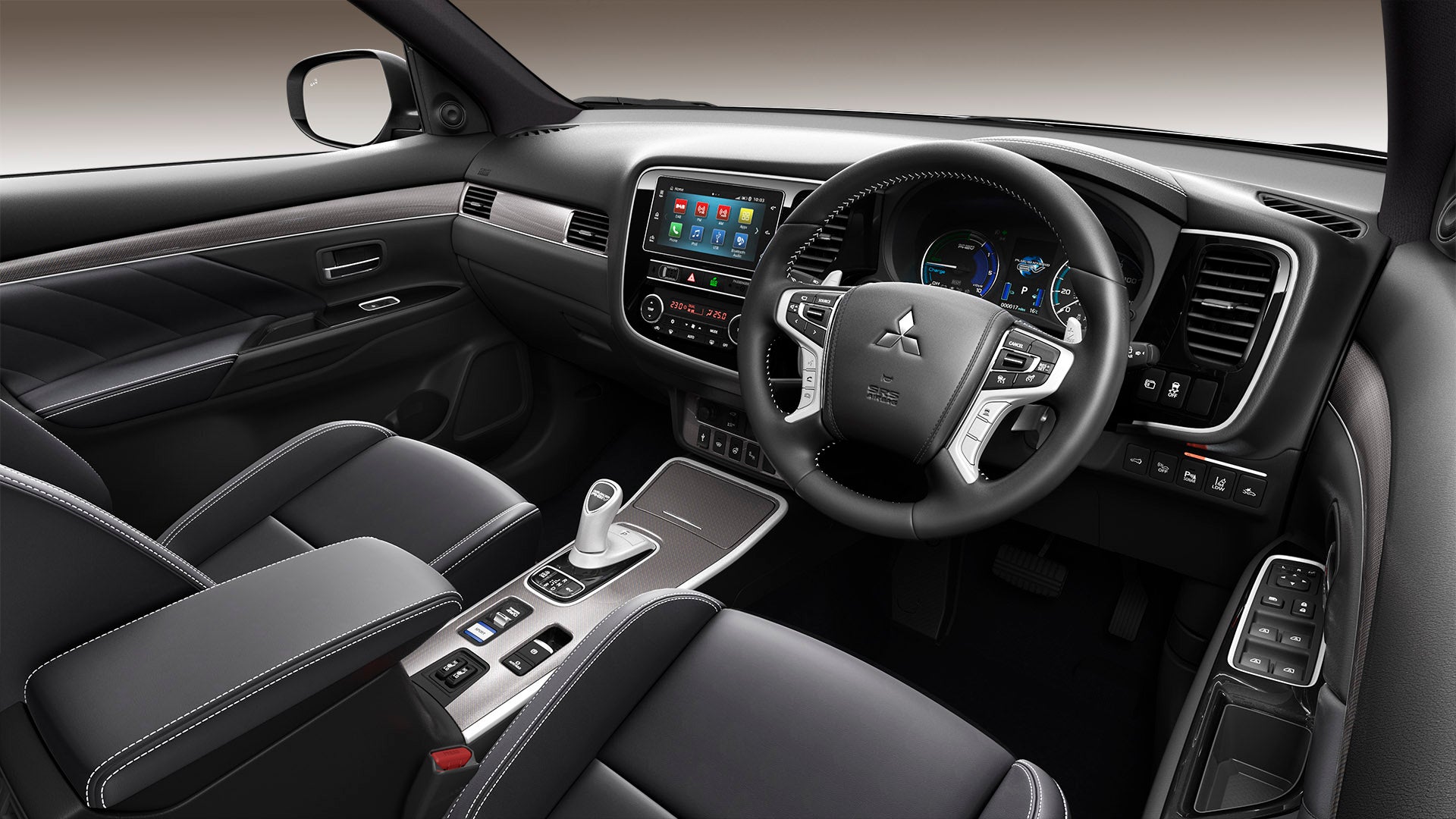
The Outlander works well, despite the complexity of its set up. Like most hybrids though, including the plug-in ones, it is a bit of a dead end, long term. For much of the time, outside of short commutes, you will find yourself using a large petrol engine to lug around some hefty bodywork, hefty electric motors and hefty battery pack.
Given Mitsubishi’s new strategic alliance with Renault-Nissan, I can’t be sure how long Mitsubishi will continue to do its own thing. Given their enthusiasm for all things all-electric, such as the Renault Zoe and Nissan Leaf, the all-electric Outlander cannot be far away. Good.
Join our commenting forum
Join thought-provoking conversations, follow other Independent readers and see their replies
Comments